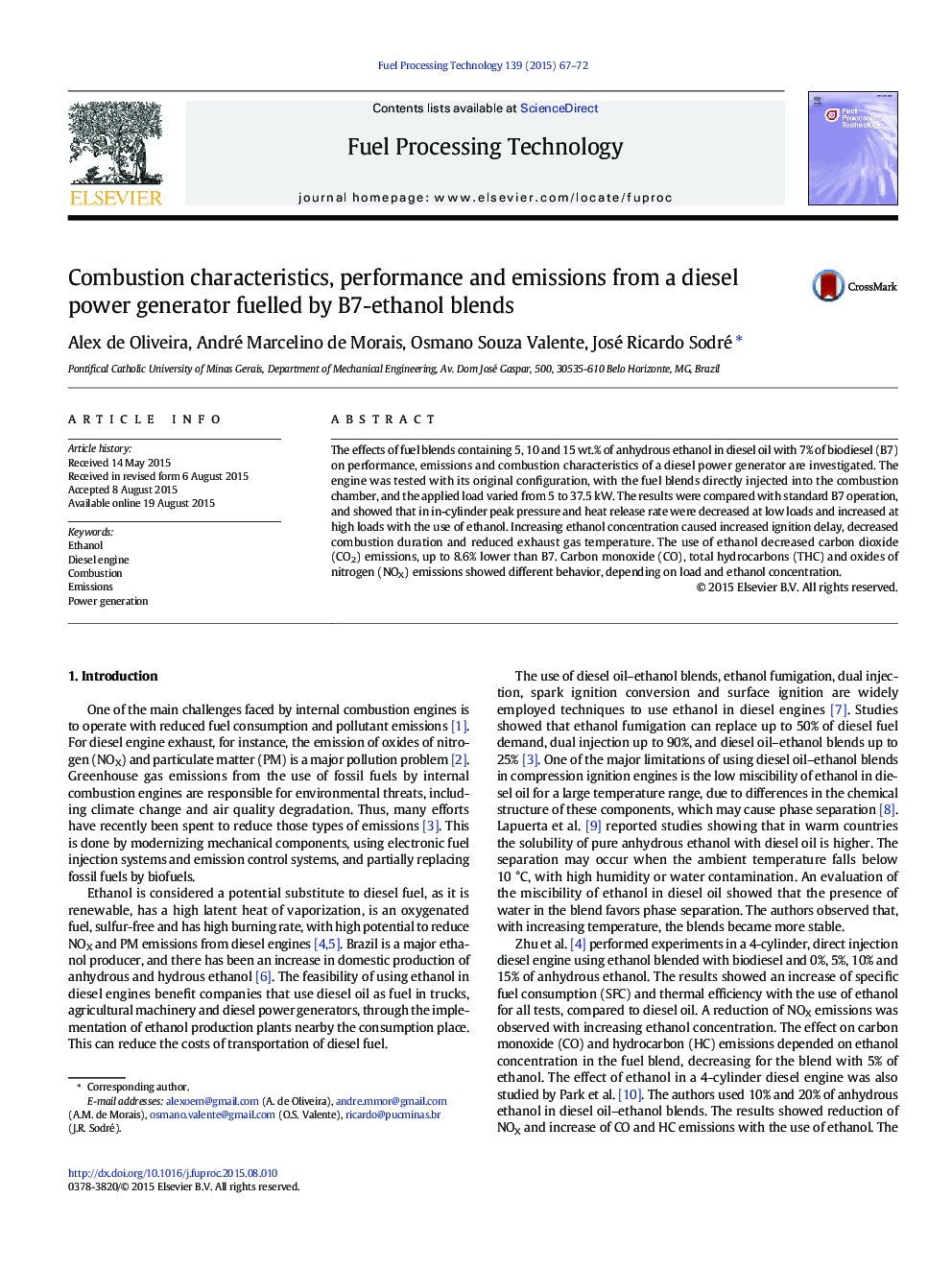| Article ID | Journal | Published Year | Pages | File Type |
|---|---|---|---|---|
| 209432 | Fuel Processing Technology | 2015 | 6 Pages |
•Addition of 15% ethanol to B7 increased fuel consumption and reduced CO2 emissions.•The use of 10% of ethanol in B7 produced the lowest CO emissions.•Ethanol blends increased THC emissions at low loads and reduced at high loads.•The use of 5% and 10% of ethanol did not affect NOX emissions.•Fuel blend containing 15% of ethanol showed significant reductions on NOX emissions.
The effects of fuel blends containing 5, 10 and 15 wt.% of anhydrous ethanol in diesel oil with 7% of biodiesel (B7) on performance, emissions and combustion characteristics of a diesel power generator are investigated. The engine was tested with its original configuration, with the fuel blends directly injected into the combustion chamber, and the applied load varied from 5 to 37.5 kW. The results were compared with standard B7 operation, and showed that in in-cylinder peak pressure and heat release rate were decreased at low loads and increased at high loads with the use of ethanol. Increasing ethanol concentration caused increased ignition delay, decreased combustion duration and reduced exhaust gas temperature. The use of ethanol decreased carbon dioxide (CO2) emissions, up to 8.6% lower than B7. Carbon monoxide (CO), total hydrocarbons (THC) and oxides of nitrogen (NOX) emissions showed different behavior, depending on load and ethanol concentration.
